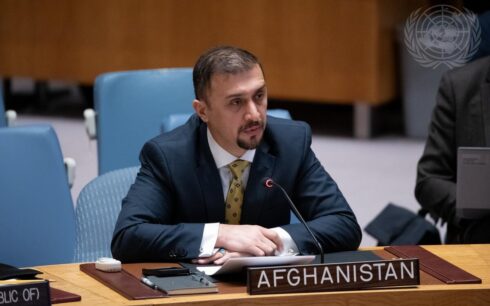Nearly 500 people are still missing in Zindajan district in Herat province after Saturday’s deadly 6.3 magnitude earthquake, UN aid coordinators said on Tuesday.
Zindajan district, the epicenter of the earthquake, was hit the hardest, with 1,300 of its residents killed and a further 1,700 injured. According to the United Nations’ aid coordination office, OCHA, an estimated 12,110 people, or 1,730 families, have been affected in five districts of Herat.
However, numbers of affected families are expected to rise, OCHA spokesperson, Jens Laerke, said on Tuesday in Geneva.
The UN’s refugee agency, UNHCR meanwhile said a series of aftershocks, including one measuring 5.1 magnitude on Tuesday, has made the situation worse.
UNHCR’s spokesperson William Spindler said that amid extensive damage and traumatized survivors, search and rescue teams are on the way and will help with water and shelter for the most vulnerable. He said families in the worst-hit areas have lost all their belongings, including much needed winter clothing.
World Health Organization (WHO) spokesperson Tarik Jasarevic said on Tuesday that the priority at the moment is to save the lives of the injured and to ensure survivors have access to humanitarian relief, including essential health services. “Women, children and vulnerable populations are gravely affected by the disaster,” he said.
Jasarevic said WHO had provided enough supplies to treat 650 injured patients at Herat Regional Hospital. An additional 25 metric tonnes of medicines and medical supplies have also been sent to Herat, while 54 mobile health teams, including three by WHO, have been deployed in the affected areas and 12 ambulances have been sent to Zindajan district and Ghorian district to evacuate casualties to the regional and other hospitals.
He warned however that any displacement caused by a disaster poses serious health risks, including an increase in the spread of infectious diseases such as acute respiratory infections, measles, and acute watery diarrhea.
He urged health authorities to make the necessary preparations for any such outbreaks. Jasarevic also called for psychological first aid for survivors and for friendly spaces for children to be established – especially for children who have lost family members.
WHO meanwhile stated that emergency shelters and long-term solutions were needed in order for victims to withstand winter. The organization stated that tarps, blankets and clothing, as well as food assistance and protection, are also being provided as a priority.
In a separate report on Tuesday, OCHA said search and rescue efforts are ongoing with the support of international partners including Iran and Türkiye.
“The epicenter of the earthquake – Zindajan district – is the worst-affected area with 1,294 deaths, 1,688 injuries and 100 percent of homes destroyed. A further 485 people (191 men and 294 women) are reported to be missing,” OCHA said in their latest report.
The organization stated that critical gaps identified to date include the limited number of partners available to provide specialized counseling to victims, especially children. Another key problem was poor phone and signal connectivity in the affected areas which is disrupting communication and delaying the transfer of assessment data.
OCHA also stated that women and children from the worst-hit areas have been evacuated to facilities in Herat city, and that “leaving men behind has cut off community safety nets. There’s not yet a clear list of locations where women have been gathered and efforts are being made to identify safe havens for women and girls where roving assistance can be provided by partners.”





